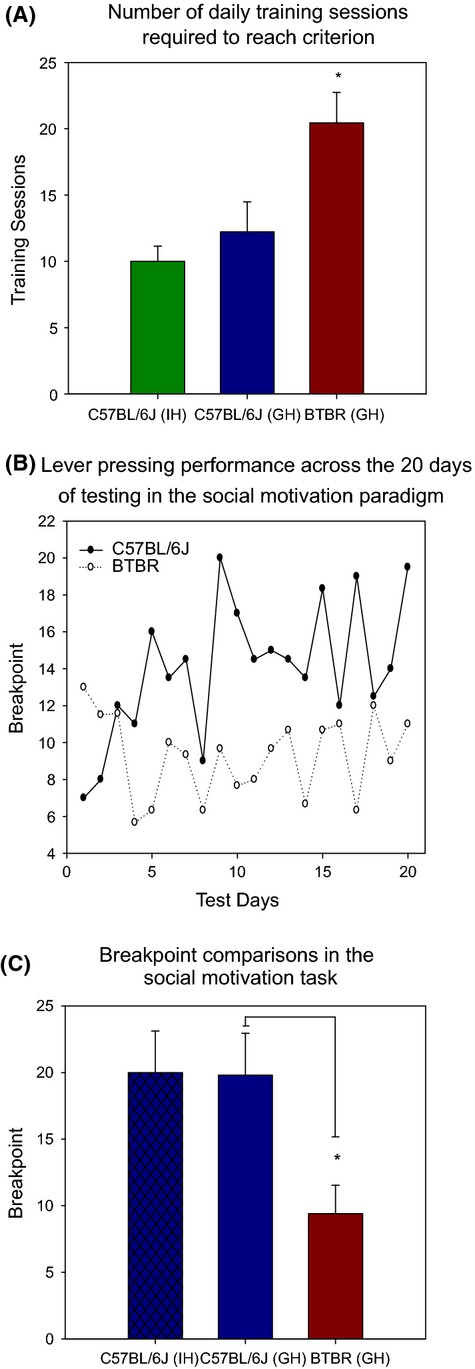Figure 1.

Results from the social motivation testing paradigm. (A) The number of daily training sessions required to reach criterion of at least 10 operant responses over three consecutive days. Only nine of 17 BTBR mice reached criterion while all B6 mice successfully learned the task regardless of housing condition. The BTBR mice that did learn to press for the social reward required significantly more training sessions to do so than the housing-matched B6 mice. (B) Mean breakpoint of group-housed BTBR and B6 mice across testing sessions of the social motivation paradigm. Asymptotic performance was observed soon after mice moved from the training to the testing phase of the paradigm. (C) Mean breakpoint of individually housed B6 mice (n = 9), group-housed B6 mice (n = 9), and group-housed BTBR mice (n = 9) across the last 10 days of testing in the social motivation task. There was no significant difference between IH and GH B6 mice, however, there was a significant difference between the GH B6 versus BTBR mice. In all figures, *indicates significant results.
